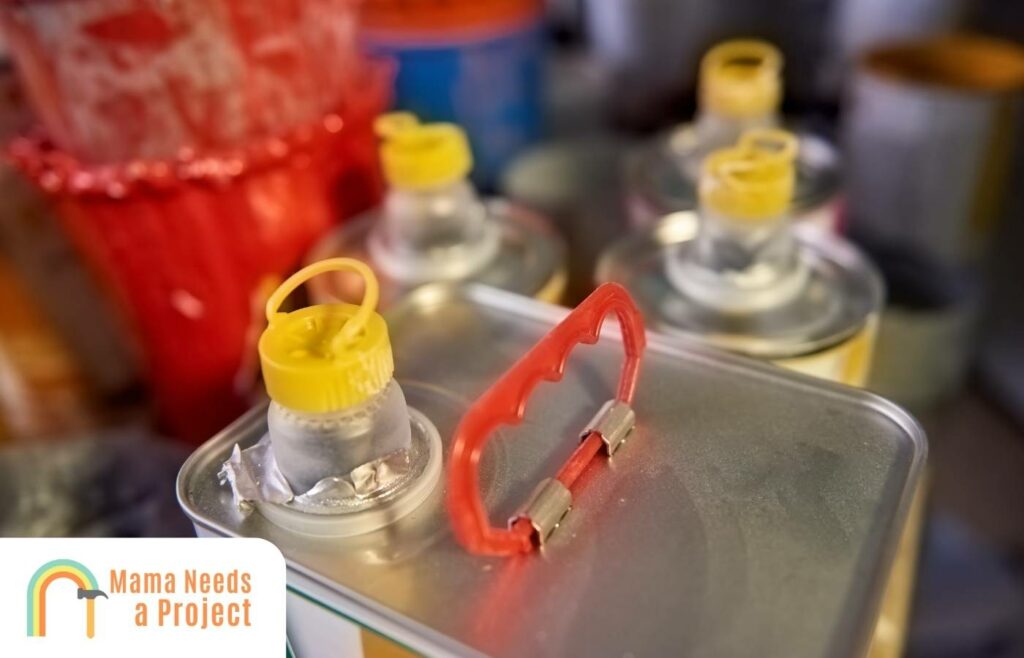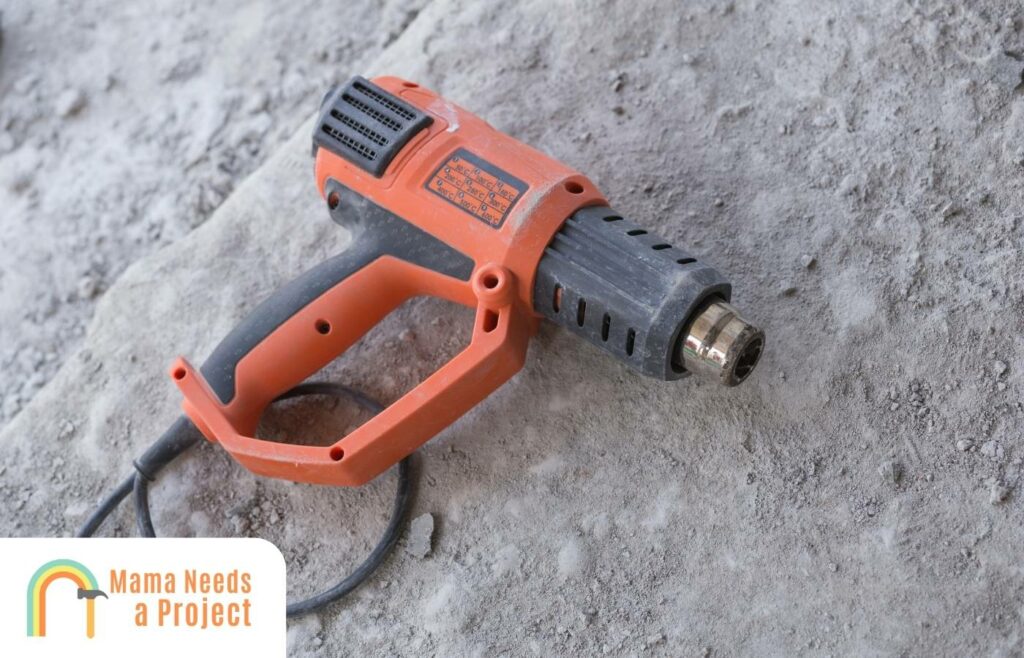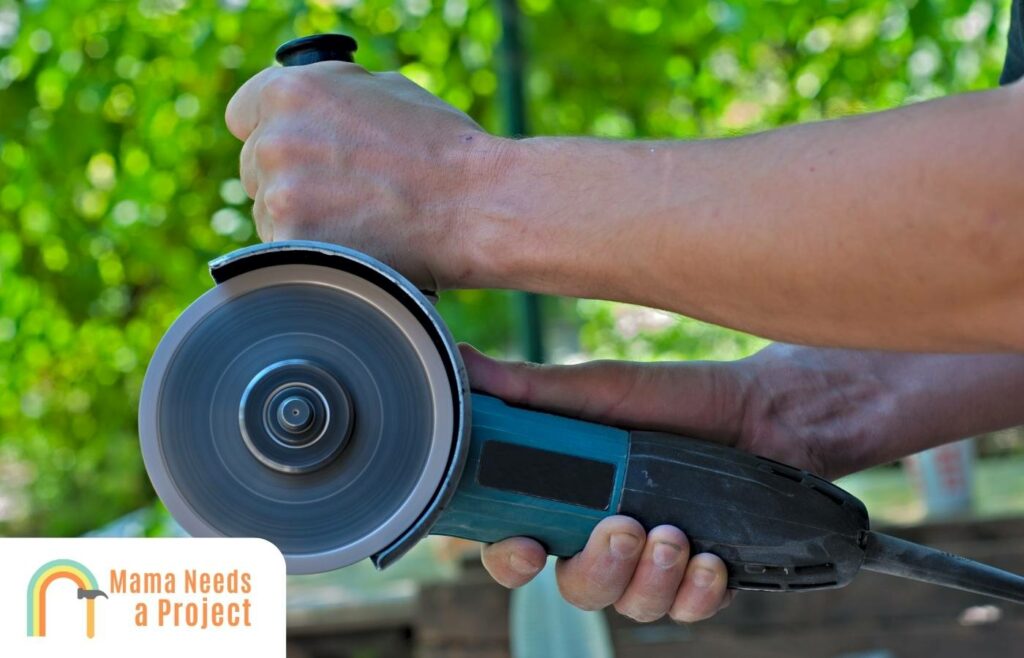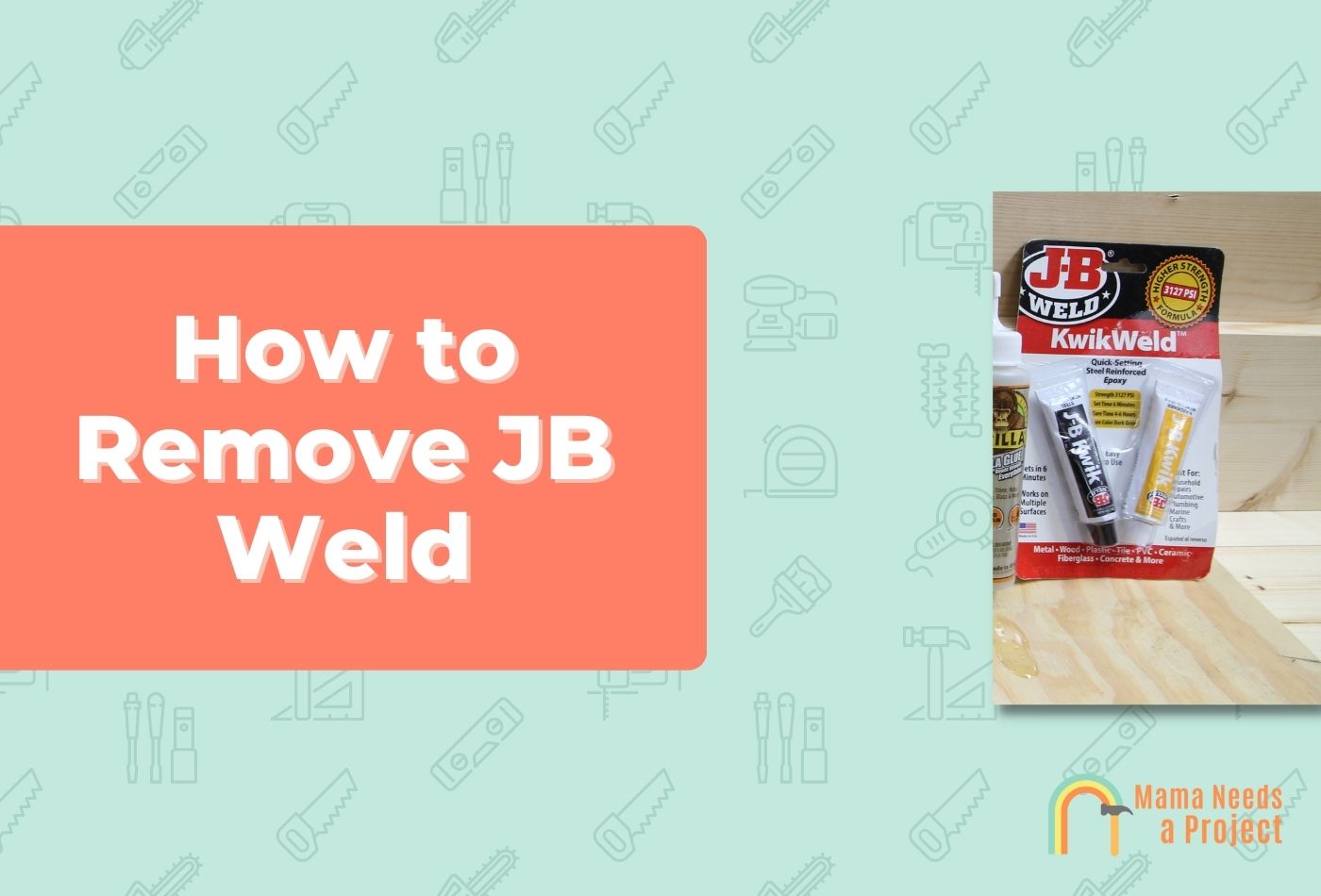How to Remove JB Weld (3 EASY Methods!)
JB Weld is a two-part epoxy glue that you can use for all kinds of crafts and home repairs. It creates an extremely strong and durable bond between different surfaces, but what do you do if you need to remove it?
In this post, I’ll show you exactly how to remove JB weld and give you a few tips and tricks to make your job easier. Let’s dig in!
There are three options for removing JB Weld from various surfaces:
- Chemical Method – using acetone or vinegar
- Heat Method
- Grinding and Sanding Method
Though JB Weld is marketed as a permanent bond, several ways exist to remove it from virtually any surface including wood, metal, and even your hands or skin.
How to Remove JB Weld Properly
1. Chemical Method
You may think that JB Weld adhesive is permanent, but with the right chemicals, you can remove it fairly quickly.

Before you start the removal process, you’ll need to gather the following supplies:
- Protective gloves
- Face mask
- Safety glasses
- Tack cloth or other clean cloth
- Acetone
Surprisingly, acetone works excellently as a JB Weld remover. But please do not skip the safety precautions when using this method! You should wear all the necessary gear (gloves, mask or respirator, and glasses) to protect yourself from the harsh fumes released during this process.
Before putting any acetone on the adhesive, you should ensure that the acetone will not damage the surface underneath. Acetone is a chemical, and it could damage wood or other surfaces so be sure to double check to make sure your surface isn’t damaged.
Choose an inconspicuous spot you can’t usually see and put a little acetone on it for 10 minutes. If it doesn’t leave a mark or damage the surface, then it’s safe to proceed.
Once you have put on all your safety gear, thoroughly saturate the JB Weld with the acetone. The acetone will create a chemical reaction and begin to soften the adhesive. During this process, toxic fumes will be released, so make sure you wear your mask through this whole process and, if possible, do it in a well-ventilated area, preferably outdoors.
The JB Weld should soften in about 15 minutes or so. Once it is soft enough to wipe away, use the tack cloth and wipe the JB Weld adhesive from the surface beneath. You may need to pour a little acetone on your cloth and wipe the surface clean to ensure you remove all the glue.
And there you have it! Pretty simple, right? The only downsides to this method are it can be dangerous because of the chemical fumes, and the acetone could damage the surface.
2. Heat Method
Another great way to remove JB Weld is by using extreme heat. Remove JB weld with heat is effective, but again, you need to take the right safety precautions when attempting this method.

JB Weld can withstand temperatures up to 600 degrees Fahrenheit, which means you need to use something that can create a lot of heat. There are a few different tools you can use for this.
- Heat gun
- Propane torch
- Soldering iron
All of these tools can reach the necessary heat you need to remove JB Weld, and you’ll follow the same process no matter which one you choose. The heat gun is probably the most commonly used tool for this method since they are reasonably priced, and many serious crafters already have one in their tool kit.
The soldering iron is a good choice if you have a small area to work with since the heat gun or propane torch covers a larger area at one time.
Huge Disclaimer: You need to ensure that the surface to which you will be exposing the extreme heat can withstand that heat. For example, if you are working on a plastic surface, the high heat will melt and destroy it. If you’re removing JB weld from wood, applying too much heat can cause heat stains on wood – which you might not want.
The high temperatures will break down the structure of the JB Weld and make it soft, just like the chemical method. When you apply heat, make sure you have the temperature up to at least 550 degrees. Once you hit 600 degrees, the heat will dissolve JB Weld from the surface.
Once the JB weld is soft, you can use a putty knife or another object to scrape it off the surface. But remember, it will be extremely hot – so avoid touching it.
If you are nervous that the heat will burn or melt the surface, use one of the other methods to remove JB Weld. The danger of burning or damaging the surface is really the only con to using this commonly used method.
Heat can also be a great method to remove hot glue from wood.
3. Grinding and Sanding Method
Looking for a safer way to remove JB weld? Consider the grinding or sanding methods!

The other two methods are relatively quick processes. However, if you choose to sand or grind the JB Weld adhesive, you should expect to spend a bit more time on your project.
Here are the supplies you should gather for this method.
- Protective gloves
- Safety glasses
- Face mask
- Sandpaper, electric sander, or Dremel tool
J B Weld produces a super strong bond, so it will take a bit of elbow grease to remove it from the surface by sanding or grinding. This method is sometimes called mechanical force and it’s one of the less toxic methods.
To begin, take an angle grinder and start grinding away the J B Weld. While sanding, you will see quite a bit of dust and metal bits from the grinder flying around. This is why the face mask and safety glasses are essential to wear.
You should first start with a course grit sandpaper when removing JB weld. The increased abrasion should help you remove J B weld to a certain point.

Continue grinding till the JB Weld adhesive is removed completely.
Be careful not to damage the surface you are working on. After you’ve removed most of the adhesive, you can switch to fine grit sandpaper to smooth out the surface of your project.
If you’re wondering how to remove JB weld from wood, this is often the best option because you don’t have to worry about heat marks or the chemicals involved with the other methods.
TIP: You can also use a sander to remove wood glue from wood.
How to Remove JB Weld from Skin
When you are working with an adhesive like J B Weld, you should always wear gloves and be careful not to get any on your skin. However, if you get some on your skin, you should try to wash it off before it cures on your skin.
Removing JB weld from your skin is actually easier than you might think. You can wash it off your hands or skin by using warm soapy water and scrubbing.
That said, if it’s had time to harden, it’s going to be more difficult.
If the adhesive does cure (it can harden quickly in under 10 minutes), you can use the chemical method to remove it from your skin.
But instead of using acetone, use vinegar. Both can cause skin irritation, but vinegar is less likely to harm your skin and it’s a bit more eco-friendly. The vinegar should react quickly with the JB Weld, and then you can wash it off using soapy water.
How to Remove JB Weld Metal Surfaces
If you need to remove JB weld from metal, you can use the same methods above.
The most commonly used method is using heat. A heat gun works great for removing JB weld from metal because you don’t have to worry as much about it melting or burning the surface.
If you choose to use a grinder, just be careful not to scrape and damage the metal surface.
Also, the chemical method is an excellent choice if you have an accidental spot of cured epoxy on your metal surface.
Here’s a great video you should check out if you need more help removing JB weld from metal!
FAQs About JB Weld
What Is JB Weld Used For?
You can use JB Weld for so many different types of projects. It was created as a bonding agent for pretty much any surface type including:
- Metal
- Wood
- Plastic
- Ceramics
- Fabric
- Paper
- Marble
- Concrete
- Porcelain
It can be used as a simple glue or a strong bond to create an instant weld between two surfaces.
Is JB Weld a Permanent Bond?
If you don’t expose the adhesive to acetone-based products or extreme heat, then yes, the JB Weld epoxy glue is a permanent bond. It’s even waterproof – making it a great adhesive for many different projects!
How Permanent is JB Weld?
JB Weld is meant to be used as a permanent fix for various applications. Cured J B weld will last for years, if not decades, if it’s not exposed to the chemicals or heat mentioned above.
Will Vinegar Remove JB Weld?
Yes, vinegar is a great way to remove JB weld! Just because it’s a regular household item doesn’t mean you should wear protective gear, as mentioned in the chemical method. When the vinegar starts breaking down the chemicals in the weld adhesive, it will release toxic fumes you should not breathe in. You should still use caution and use the vinegar in a well-ventilated area to remove JB weld.
Final Thoughts
J B Weld is an excellent choice when you need to bond various surfaces together. Whether you need to bond plastic, metal, wood, or concrete – JB weld is a solid choice.
Even though it is a permanent fix, there are several ways that you can remove JB weld. By using acetone, vinegar, a heat source, or angle grinder – removing JB weld can be easier than you think.
Just follow a few simple steps to remove JB weld properly and always keep safety in mind.

Miriam Ronne wears many hats, including but not limited to freelance writer, blogger, professional quilter, serial DIYer, and obsessed dog mom. She loves to teach beginners how to do all sorts of crafts and techniques. If she’s not writing her next blog post, she’s either sewing a new project or playing with her pup. You can find Miriam on her blog, Stitch Obsessed, or connect with her on Instagram.

